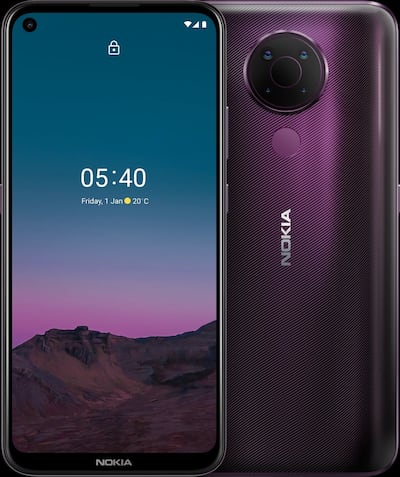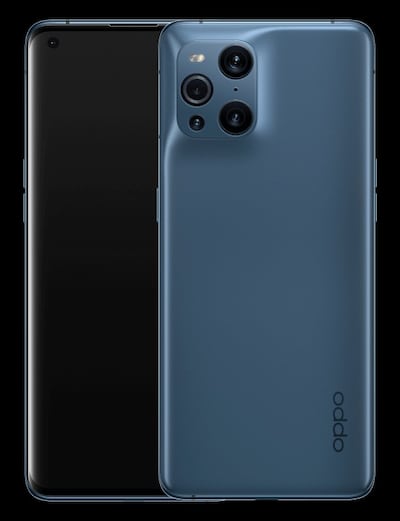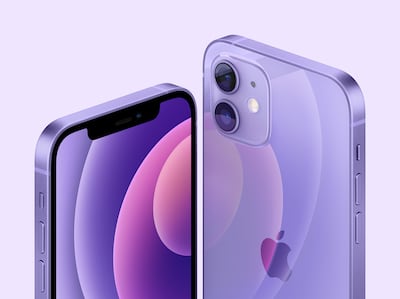Smartphones have become an integral part of our existence, playing a starring role in our work and social lives, replacing cameras and sat navs, and monitoring our health while they’re at it.
But phones and features vary wildly, as does the price tag attached. So how do you pick the best smartphone for you without overpaying for features you’ll never use?
There are a few things to consider.
Operating system
This is where everyone starts, and it's largely down to two options: are you an Apple user, or an Android person? It has been the cause of many a heated debate online, but each operating system has its own strengths and weaknesses.
Apple’s iOS offers a fairly uniform user experience. Once you’ve used one iOS device, it’s easy enough to progress to the next version. Apple devices will get the latest version of the software at the same time and, until your phone is no longer supported, you’ll be able to download the updates to your three-year-old phone at the same time that they are available to the latest iPhone.
Apple has some drawbacks though. It’s a closed shop in that you are limited to the apps that Apple has approved in the App Store. That rules out some software.
On the flip side, it means malware is a much rarer event.
Google's Android tends to be more open; you can choose to install software from outside the official Play Store, but that can also leave you open to malware and other nasties on your phone. Google has been weeding malware out of the Play Store too, and removes apps that sneak through.
The software is used by several manufacturers, meaning there are a lot more Android phones out there. That doesn't mean that every phone has the same user experience though. Each phone maker can customise its operating system for Android; Samsung has One UI, OnePlus has OxygenOS, Oppo has ColourOS. Google's Pixel phone uses stock Android, as does Nokia.
Each of those options brings their own features, such as gesture control, or customised software. And updates won’t always come at the same time, with stock Android getting the latest version of the software first and other manufacturers following.
Budget
Premium smartphones are the most attention-grabbing, with myriad features you probably never even considered. They usually have the highest quality screens and the best cameras each phone maker can muster, along with decent capacity and more advanced security features, such as facial recognition. You’ll also get better build quality, with metal cases instead of plastic, and Gorilla Glass. But that means a higher price.
Sacrifice a few features and you can get a great phone for a more reasonable price. Mid-range phones may not have the highest spec camera available on the market, but advances in technology and the entrance of a few new faces to our smartphone market mean you can get a very good camera in your phone without blowing your budget. It could also mean a slightly less advanced screen, and cheaper materials for the case, plus the elimination of features such as wireless charging.
On the budget end of things, it can be a bit of a minefield. There are plenty of good budget smartphones available, but you’ll have to pick them out of the sluggish devices with basic cameras and poor storage. On the other hand, the smaller, less power hungry screens often mean better battery life. We would sooner save cash on cheaper materials over sacrificing power and RAM, so choose carefully.
Camera
If you are buying a smartphone, there’s a good chance that you are looking for a decent camera on the device. Or at least that’s what the smartphone makers think. So a lot of emphasis has been put in recent years on improving camera quality.
That means better low light quality these days; your night photos can look almost like daylight, provided no one moves.
Do you need ultrawide cameras and super macro lenses? It all depends on what you expect from your smartphone. Most mid-range and above smartphones will have good cameras that can shoot decent night images, follow fast-moving action, take a few nice landscape shots and have a good portrait mode.
Size
There was a time when smaller phones were prized above all else. Imagine being able to lose your phone under your credit card these days; it would have to be a fairly large credit card.
Thanks to streaming video and the fact that many of us work on our smartphones in an emergency, larger screens have become commonplace. Bigger screen equals bigger case, so if you want a phone that can slip into your pocket or handbag, you’ll need to compromise on screen size.
Display
Speaking of screens, quality varies massively. The all-singing, all-dancing super Amoled screens with 120hz refresh rates and a high pixel per inch count cost a bit more than the lower quality screens. But if you want to save a bit of money, a high definition screen will perform well and the standard refresh rate of 60Hz – as in, it refreshes 60 times a second – won’t result in noticeable judder as you scroll, but it will also be a lot easier on the battery life.
Battery life
Don’t be fooled by pure figures. Batteries are measured in milliamp hours and while the higher the number, the bigger the battery capacity, it’s not the only thing to take into account. The bigger the screen, for example, the more power it will take, so a 4,000 mAh battery into a phone with a smaller display and fewer power hungry features could last as long as a 4,500 mAh battery in a bigger phone.
Ready to buy? The options

Budget: Nokia 5.4 €179
Nokia’s 5.4 does a decent job given the budget price. It comes with 4GB of RAM and is powered by the Snapdragon 662 processor, giving okay performance, and has 64GB of internal storage that can be expanded with a micro SD card.
A 4,000 mAh battery will give you more than a day of use, powering a 6.4 inch LCD screen that isn’t the highest resolution but does the job well. Camera wise it’s no slouch either; a 48MP wide angle lens, a 5MP ultrawide and 2MP macro lens combine with the 2MP depth lens. On the front, you get a 16MP wide angle lens for the perfect selfie. It also includes a fingerprint scanner for security, NFC for contactless payments and a headphone jack, so you don’t need to invest in a new set of bluetooth headphones.
Mid range: Google Pixel 4a 5G (€499)
If you are looking for a good Android phone with decent features, the Google Pixel 4a 5G offers more than you’d think. The 5G compatible phone is futureproofed for network use, meaning you can hang on to it for a couple of years without the risk of missing out.
Google has made the screen bigger than the regular 4a, with a 6.2 inch display. The camera has also been improved, with a dual camera taking the place of its sibling’s single camera set-up. You’ll also get more space to edit photos and videos once you are done, with 128GB of storage. There’s a fingerprint reader on the back for security, and the processor has also been upgraded. All in all, this is a solid phone for the price.

Premium: Oppo Find X3 Pro €1,150
The Oppo Find X3 Pro offers a super macro lens on its camera that allows you to get a super magnified view. It may be somewhat of a gimmick, but it is one that has ensured the OppoFind X3 Pro has been a popular phone around these parts. What other phone gives you the ability to examine the fibres on your carpet in detail? Or flower petals? You need a steady hand to get a good shot but it certainly brings a new perspective to your environment and it is something different to set it apart from its rivals.
It does earn it though, from its internal specs to the impressive 6.7 inch display. The phone is powered by the Qualcomm Snapdragon 888, and has 12GB of RAM. That should be enough to run even the most demanding of apps. You get 256GB of space to play with, although there is no micro SD card to add on more memory should you need it.
The cameras, 3 megapixel microscope aside, take some lovely photographs, with 50 megapixel wide and ultrawide lenses plus a 13 megapixel telephoto lens to play with. And you have a choice of fingerprint or face scan should you wish to add an extra layer of security or ditch the passcode.
The cons? There is no expandable storage, and the front camera’s videos aren’t as good as the rear cameras. It’s a niggle, but given the current dependence on video calls for both work and leisure, it may be a concern for some users.

Apple iPhone 12 €929
The iPhone 12 Pro and Pro Max are hard to beat, but if you can’t quite justify the cost, the iPhone 12 offers many of the same features without being quite as eye-wateringly expensive.
The iPhone 12 has a decent dual camera that takes vivid, detailed photographs, including a portrait mode that could put paid to your standalone camera and a decent night mode. A 6.1 inch edge to edge Oled display makes all your artistic endeavours look fantastic.
There’s also 5G connectivity, and Apple’s newest A14 Bionic chip that ensures speed is a top priority. There’s a colour choice too – the current favourite here is the purple that launched a few months ago with the AirTags.
If you want to go a bit cheaper, you can opt for the iPhone 12 Mini, which shaves €100 off the price along with some of the size.

















